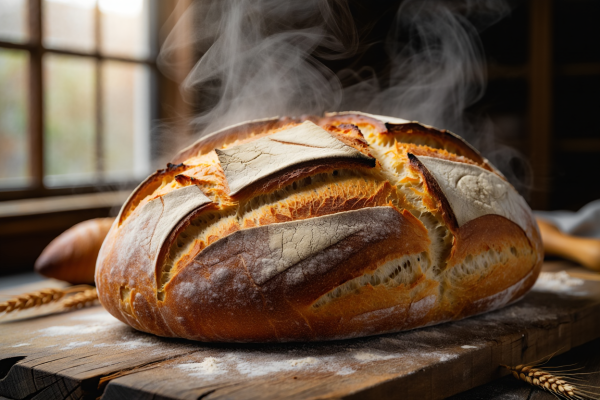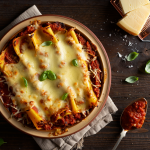
Essential Baking Sourdough Bread: Like Portfolio Balancing, It’s All About Timing
May 22, 2025
Sourdough bread is a dance with time, a slow alchemy between flour, water, and the invisible culture that breathes life into the dough. It is neither instant nor mechanical, but a ritual of patience and adaptation. You mix, you fold, you wait, watching the dough rise and fall, its texture shifting, a living organism responding to your care.
This ritual echoes the investor’s eternal challenge: timing the market’s pulse, balancing risk and reward, trusting in processes you cannot fully control but must master to succeed.
You start with a starter—a culture cultivated over days or weeks, a complex ecosystem of wild yeast and bacteria. It’s your capital base, your foundational asset. Feed it well, and it grows stronger; neglect it, and it weakens or dies. Similarly, your portfolio demands attention—nurturing, adjusting, rebalancing to withstand the market’s unseen currents.
Actual Sourdough Bread Recipe
Ingredients (Your Capital Allocation):
• 500g bread flour (core equity positions)
• 350g water (liquidity)
• 100g active sourdough starter (your working capital)
• 10g salt (risk seasoning)
Instructions
1. Mix the starter, water, and flour in a large bowl. Cover and let it rest for 30–45 minutes (autolyse phase = market accumulation).
2. Add salt, mix thoroughly, and cover again.
3. Bulk Fermentation: Let the dough rest at room temp for 4–5 hours. Every 30–45 minutes, perform a set of stretch and folds (like technical rebalancing).
4. Shape the Dough: Gently shape it into a round or oval. Place in a floured proofing basket.
5. Cold Proof: Cover and refrigerate overnight (8–12 hours). This slow proof builds structure—just like compounding.
6. Bake:
◦ Preheat oven with Dutch oven inside to 475°F (245°C).
◦ Turn dough onto parchment, score it with a sharp blade.
◦ Bake covered for 20 minutes, then uncovered for another 25–30 minutes until crust is deep golden.
7. Cool Completely: Let it cool on a rack for at least an hour before slicing (the patience test—don’t rush it).
The Rhythm of Rise and Fall
Like a sourdough starter bubbling quietly in its jar, market sentiment ebbs and flows—sometimes buoyant, sometimes sluggish. Folding the dough is akin to managing risk: you strengthen the structure without rushing the process. Too much interference, and the dough collapses; too little, and it loses form.
Investors face cognitive traps here—impatience, overconfidence, the urge to “fix” what is not broken. Technical analysis offers signals—rises and pullbacks in price akin to the dough’s fermentation cycle. Vector thinking helps see market moves as multidimensional patterns, not linear ups and downs.
The Discipline of Temperature and Time
Baking sourdough demands respecting temperature and timing. A too-hot oven kills the yeast; too cool, and the loaf never achieves its crusty glory. The timer is your discipline—know when to act, when to wait, when to pull back.
Mass psychology plays out as crowds chase trends, often baking in “too hot” conditions—herd behaviour turning bubbles into burns. The experienced investor learns to sense when the market is under or overcooked, balancing emotion with strategy.
Feeding the Starter: Compounding Patience
Regularly feeding your starter is a lesson in compounding—not just growth but resilience. It’s a slow buildup of strength, echoing how reinvesting dividends and consistently adding to positions grows wealth over time. Each feeding is a choice to stay engaged, not to chase quick gains but to build a base that will rise reliably, no matter the short-term volatility.
The Slice of Truth
When you finally slice into a loaf, the crumb reveals the truth of your process: open and airy if patient; dense and flat if rushed. The crust crackles—a payoff for your discipline and timing.
Markets reveal themselves similarly. The final return, the realised gain, is shaped by countless subtle decisions, by emotional control, by strategic patience. The slice is the sum of every fold, every rise, every moment you resisted impulsive moves.
Conclusion: The Art of Essential Baking and Investing
Sourdough baking, like portfolio balancing, isn’t a race—it’s a ritual. A slow conjuring of structure from chaos, flavor from fermentation, conviction from waiting. Each fold in the dough mirrors a moment of doubt in the market—handled right, it strengthens the core.
The market’s wild yeast is crowd emotion—irrational, contagious, deeply human. Left unchecked, it consumes reason. But when tempered by discipline, it becomes a catalyst for transformation. Investors, like bakers, must read the signs: overproof and you lose tension; act on panic, and you lose your edge.
This is the craft: not resisting volatility, but using it. Not timing the market, but understanding the rhythm of its rise and collapse. Essential baking sourdough bread reminds us: the greatest gains don’t come from force—they rise slowly, invisibly, until one day… they’re undeniable.
You’re no longer reacting when you break bread aligned with that deeper pulse—market or kitchen.
– You’re anticipating.
– You’re shaping chaos into something enduring.
– That’s not just success.
– That’s mastery.









